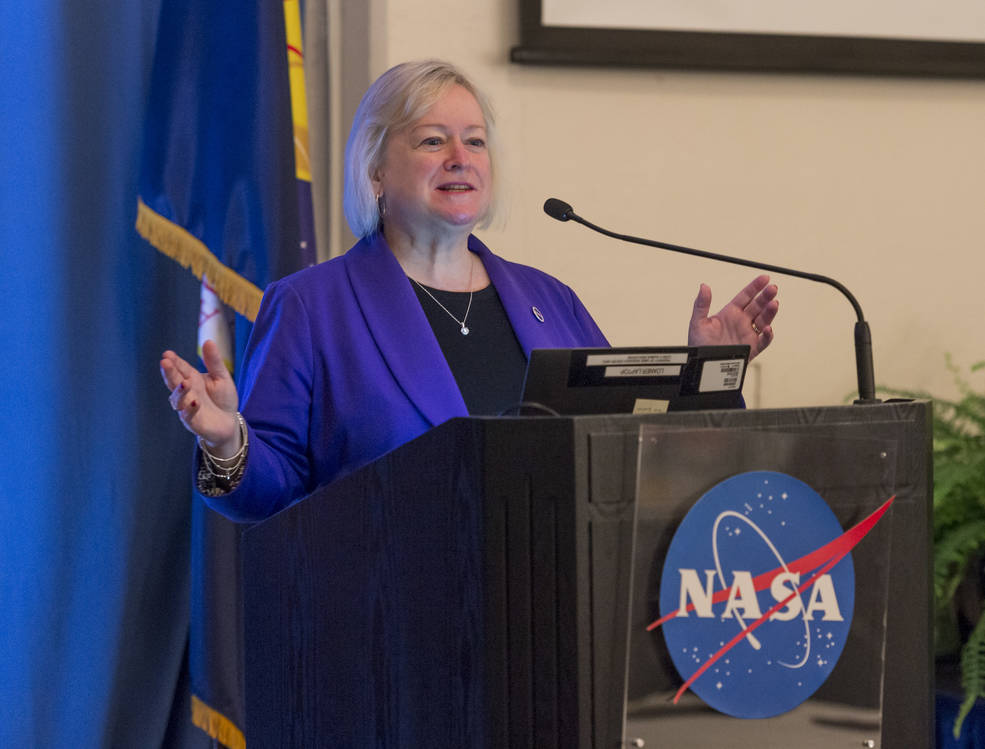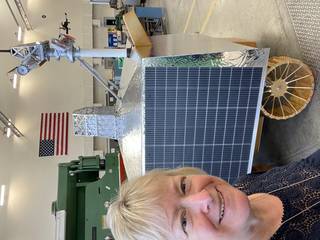
Carol Carroll didn’t start out with the hopes and dreams of becoming an engineer. As a child, the deputy center director of NASA’s Ames Research Center in California’s Silicon Valley didn’t know what engineering was, let alone that the career field existed, or that it was an option for her. For “Introduce a Girl to Engineering Day,” we share the inspiring story of how she became an engineer.
As a young girl, Carroll was completely fascinated with designing houses. She would take a shoe box and paste in cardboard walls, make curtains out of tissues, and hang them on the windows she cut out.
Growing up her family had a travel trailer that was roughly 17 feet long, just enough space for all five of them. It was small, and she was enamored with the tiny sink, the tiny stove, and the tiny little shower. She would take a piece of paper and redesign it all. She would imagine and create new floor plans and engineer a brand-new trailer. For Carroll, it was more than fascination, it was passion. She loved designing and figuring out different ways to do things.
Challenging Traditional Roles
Carroll’s father passed away when she was 10, and her mother, who was a nurse at the time, went back to school to become a teacher for health occupations. Having to be both a mother and a father, Carroll’s mother challenged the traditional role of a woman in that era, which profoundly impacted Carroll. She used to help her mother grade papers and learned a great deal about anatomy and physiology and developed a love for medicine.
Somewhere during her junior year of high school, because of her strong interest in design, Carroll decided she wanted to take drafting at school. At that time, girls were not allowed to – it was a class only for boys. Carroll’s mom had to go to the principal and then to the school board for approval, and Carroll became the first girl to take drafting at her high school.

As she began thinking about her career options, she considered if she should be a lawyer or a doctor. She thought, “being an architect was a natural fit,” until she realized she was not artistic. She didn’t know what other careers were out there. It was her stepfather, Del, who said, “Carol, you really should consider engineering.” And she thought, “What the heck is an engineer?”
That is how she began attending several sessions of an “Explore Engineering” program in her community, where it gave her the opportunity to meet and engage with people who were engineers – which, ultimately, led her to choosing a career in engineering.
At Virginia Tech, in Blacksburg, Virginia, she began her university studies in biomedical engineering, marrying the love she had for the medical field and engineering into one career, but she switched to mechanical engineering, which was a much better fit for her. Mechanical engineering can be applied to anything, she says, and has been a great and successful career for Carroll, giving her the opportunity to work on a wide range of projects, from rocket motors to wind tunnels to thermal protection systems.
Inspiring a New Message
However, engineering wasn’t always a clear path in front of her. In fact, in high school, she took an aptitude test and was told that she should be a social worker or a nurse. Not an engineer.
How many girls today who can be successful engineers are hearing that same message? In Carroll’s college engineering classes, only about 10 percent of students were women, and today women are still underrepresented in the engineering field.
Carroll’s own journey to an engineering career unfolded in unexpected ways. It was her stepfather who introduced her to engineering and her mother, a trailblazer, who told her that she could do anything she aspired to do. By encouraging her not to take “no” for an answer, she helped put Carroll on her path to becoming an engineer.
At NASA, we celebrate “Introduce a Girl to Engineering Day” to share the exciting and diverse field of engineering with the young women and girls in our lives and across the world, and with those who may not have an engineering role model. We encourage them to explore the world of engineering as a potential career field.
Join us in this initiative and be the person who introduces engineering to the next generation of women engineers. Be the voice that inspires and tells them that they can do anything. They can be the future of engineering.

























